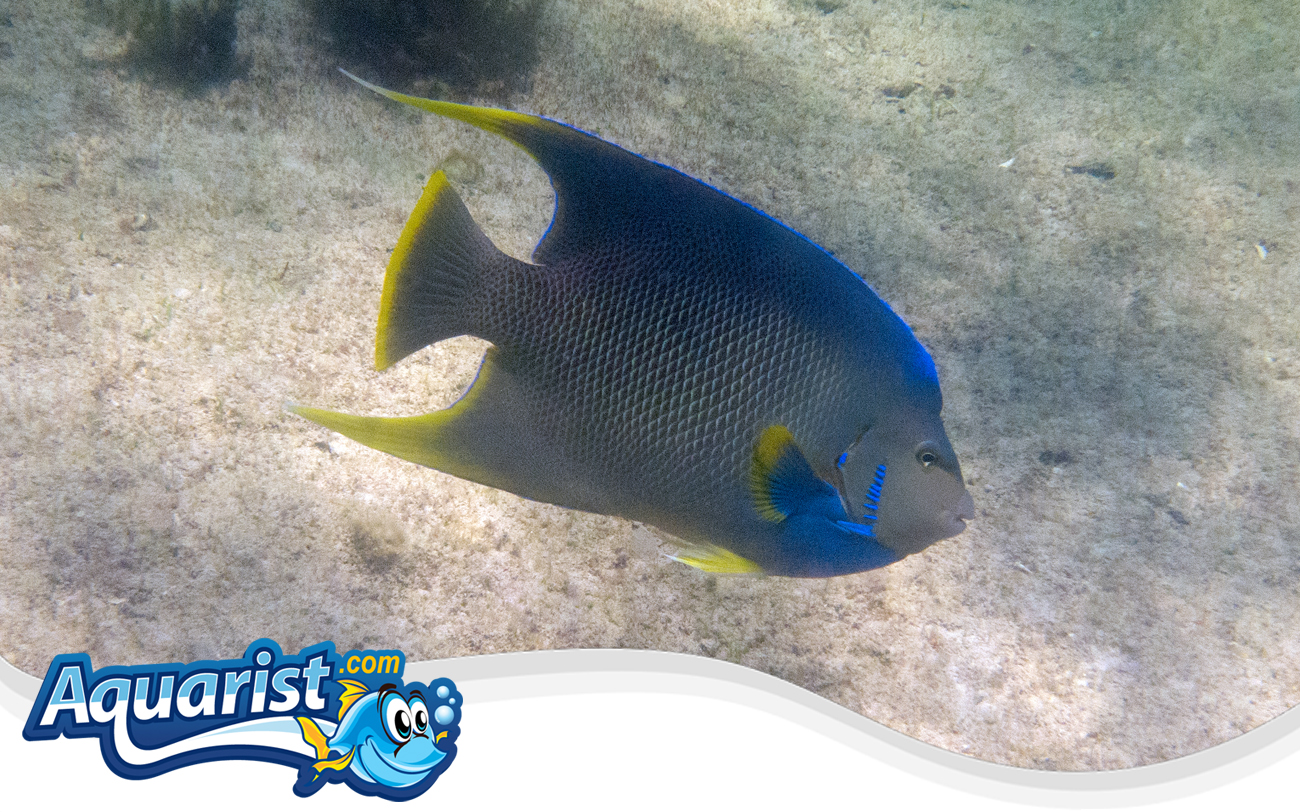Overview
- Native to the Western Atlantic, primarily found in the waters surrounding Bermuda, the Gulf of Mexico, and the Caribbean.
- Recognized for its vibrant blue and yellow coloration, with a striking pattern that changes as it matures.
- Juveniles have a deep blue body with curved white and electric blue bands, while adults develop a more solid blue and yellow appearance.
- A large, bold fish that requires ample space to swim and explore.
- Closely related to the Queen Angelfish, often mistaken for it due to similar color patterns.
Feeding
- Omnivorous, feeding on a varied diet of sponge, tunicates, algae, and small invertebrates in the wild.
- Readily consumes high-quality pellets, flakes, and frozen foods such as mysis shrimp, brine shrimp, and chopped seafood.
- Requires a diet rich in marine algae and sponges to maintain vibrant coloration and health.
- Should be fed multiple times a day to support its active metabolism.
- Providing live rock with natural algal growth encourages natural grazing behavior.
Habitat
- Typically found in coral and rocky reefs, preferring depths of 10 to 100 feet.
- Requires an aquarium with plenty of swimming space and hiding spots created with live rock.
- Prefers strong water movement and high oxygen levels to mimic natural ocean conditions.
- Best suited for tanks of at least 180 gallons due to its potential adult size of 15 inches.
- Not considered fully reef-safe, as it may nip at corals, clams, and other invertebrates.
Fish Care
- Optimal water temperature: 74-82°F (23-28°C).
- Ideal pH range: 8.1-8.4, with a specific gravity of 1.023-1.025.
- Requires high water quality with consistent filtration and protein skimming.
- Regular water changes are essential to maintain a clean and stable environment.
- Can be territorial, especially as it matures, so adequate space and hiding areas are crucial.
Compatibility
- Semi-aggressive, best housed with similarly sized fish that can hold their own.
- Compatible with tangs, groupers, larger wrasses, and other robust marine species.
- Should not be housed with smaller, timid fish that may become targets of aggression.
- Can be territorial toward other angelfish unless introduced as a juvenile to a very large tank.
- Not fully reef-safe, as it may nibble on corals, sponges, and small invertebrates.
Aquarium Behavior
- Active and inquisitive, frequently patrolling the tank in search of food.
- May establish territories and defend them from other similarly sized fish.
- Displays intelligence and curiosity, often recognizing its keeper.
- Prefers a well-structured environment with caves, overhangs, and open swimming areas.
- Thrives in a well-maintained aquarium with stable water conditions and a varied diet.


